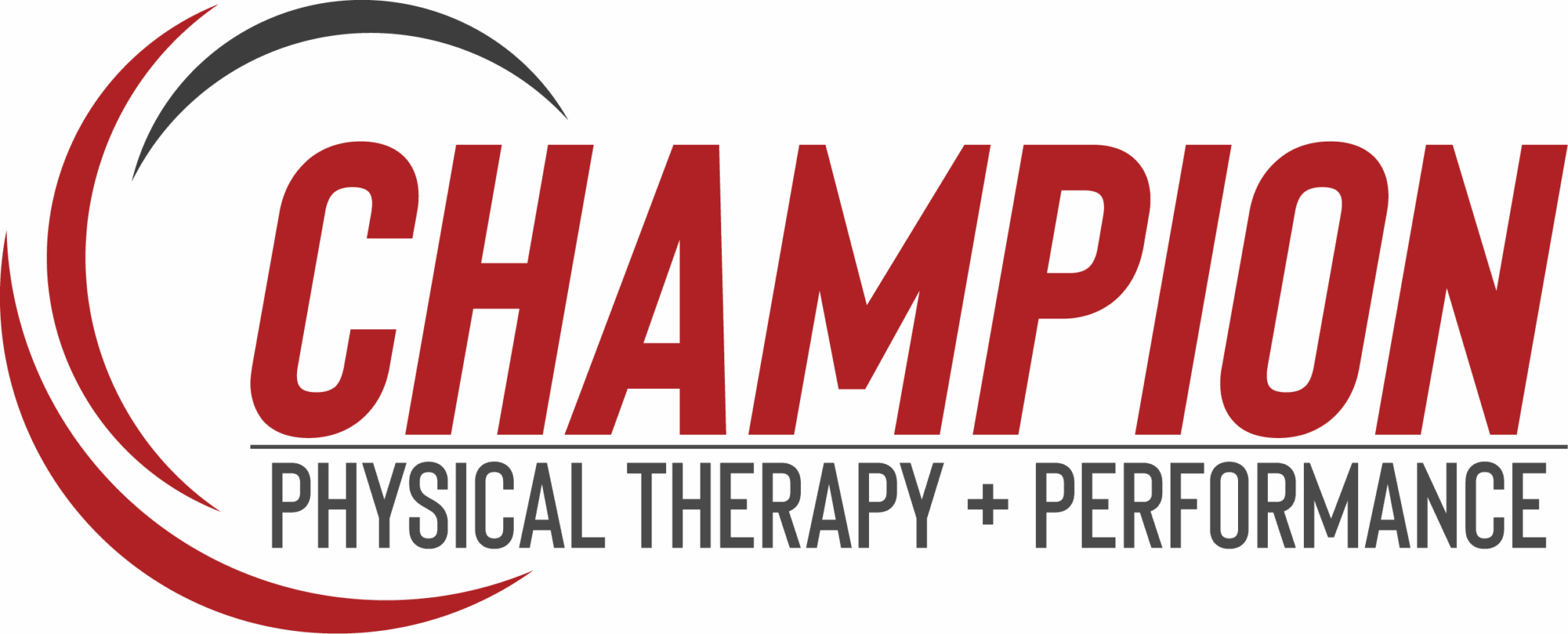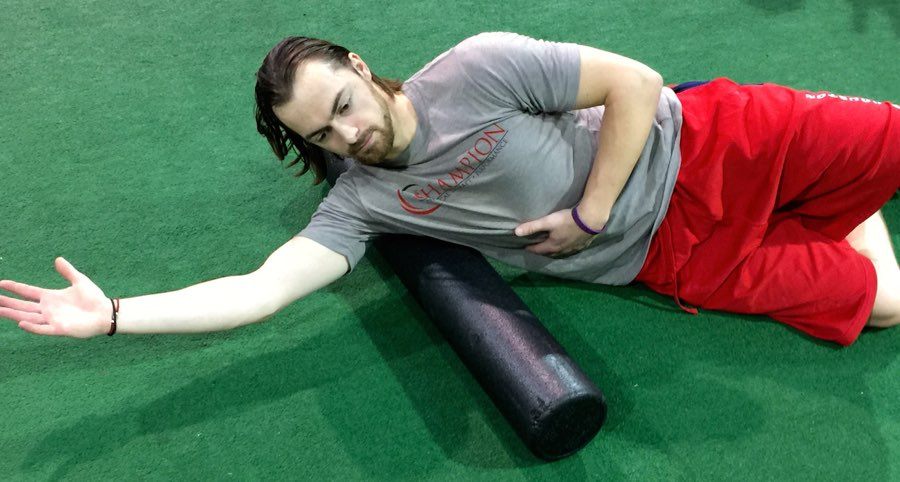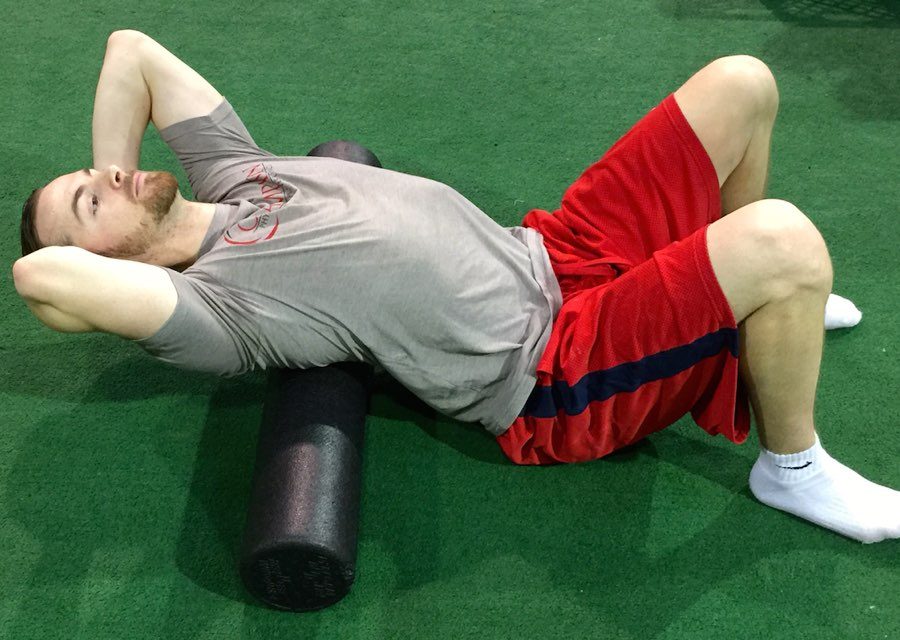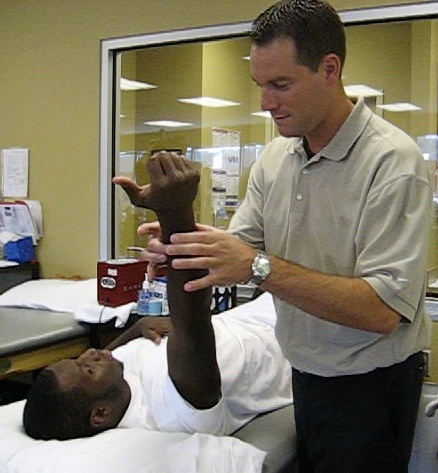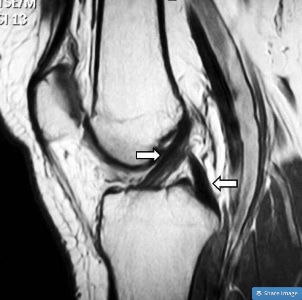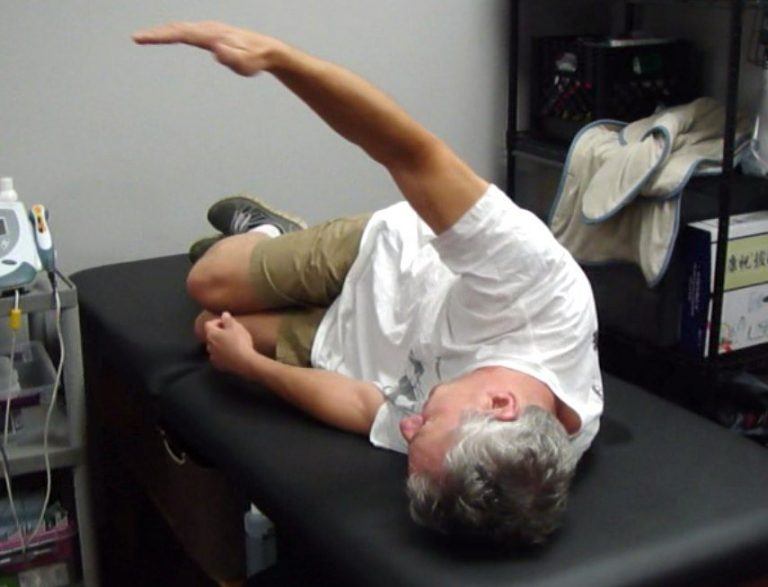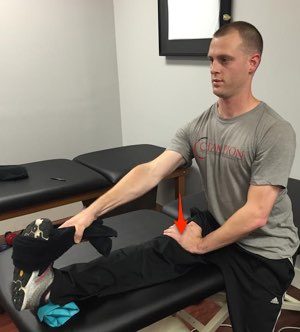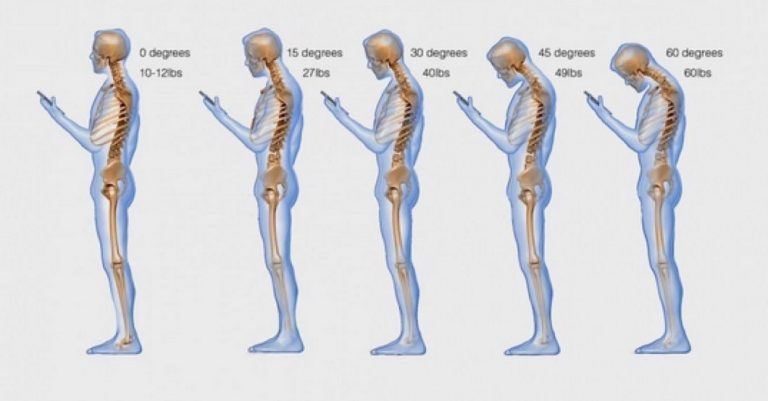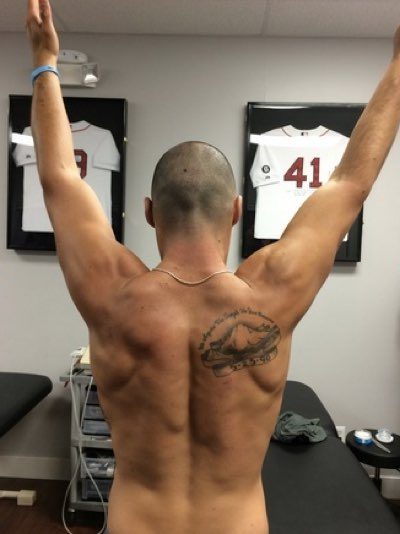3 Ways to Improve Your Overhead Position
 In our practice at Champion, one of our areas of expertise is helping people get the most out of their bodies and improve their performance. One of the more common areas of performance we work on with people is improving their overhead position.
In our practice at Champion, one of our areas of expertise is helping people get the most out of their bodies and improve their performance. One of the more common areas of performance we work on with people is improving their overhead position.
It’s great to see so many people wanting to work overhead again, however, this is a more challenging position to achieve than most realize. I’m not going to lie, I’m worried that we’re pushing people during their workouts and causing more harm than good for many. I’ve seen a bunch of people in for physical therapy recently with shoulder pain and an angry rotator cuff because they’re working beyond fatigue while trying to maintain a quality overhead position.
Before we get into a few ways to improve your ability to work overhead, let’s briefly discuss some of the reasons this position can be compromised.
Why The Overhead Position is Challenging
The overhead position, although commonly utilized in workouts, can be more of a challenge than most think. Not only does the bony anatomy offer an inherent obstacle on some, but efficient dynamic stability of the shoulder joint and endurance of the muscles are often compromised. This can lead to subtle positional changes that often go undetected by the athlete or the strength coach.
The bony anatomy of the glenohumeral joint affords only a small amount of space for the rotator cuff tendons, bursal tissue and biceps tendon. If the humeral head (the ball) rides up in the glenoid (the socket) because of fatigue, poor control or even encroached upon by a small bone spur, then pain and poor function may result.
Working through these deficits will not help improve the overhead position. This isn’t one of those areas you can just force through and hope it gets better. Over time, this can lead to tissue wear, impingement (tendonitis) or even a rotator cuff tear over time..
Let’s look at the anatomy and what is involved. As you can see, there’s only a small amount of space in the shoulder, about 1 cm in a normal joint. This space isn’t empty, it’s filled with your rotator cuff tendons and a bursa. We have little room for error, especially in an athlete doing repetitive overhead activities like throwing a baseball, pressing or even a snatch.
In the photo below, I’ve highlighted the subacromial space in red (photo credit). This is where the rotator cuff and bursa are located:
As a result, you may present with shoulder pain along the outside aspect that is almost felt midway down the arm (where the deltoid muscle attaches).
This is typically referred pain from the rotator cuff or bursal tissue (bursitis). If this is the case, the athlete needs to stop the overhead position and be assessed by a physical therapist to determine the extent of the injury and potentially make changes to their workout routines. I’ve seen this a bunch recently and there’s a common theme with most of them:.
- They have subtle laxity in their shoulders, meaning the joint capsule is just slightly looser than the ‘normal’ shoulder. They can’t do anything about this as this is most likely a genetic predisposition. This is probably a good thing in the long run and common in athletic people.
- They also have poor dynamic stability and weakness of the shoulder and scapula musculature but have never really had a rehab program to address the ‘little’ muscles and get a good base of control. Combine this with #1 above and we are starting to see the problem…
- Finally, their overhead position has been compromised by a lack of mobility. These mobility restrictions are usually tightness in their soft tissue, particularly their lats, and poor thoracic mobility. These mobility issues usually come from a society that is biased toward sitting at a desk for many hours or being on a smartphone and having our neck and spine in a forward flexed position. This can be made worse in athletes as a result of overhead workouts that are focused on creating a powerful acceleration forces (ie throwing a baseball or swimming).
3 Ways to Improve Your Overhead Position
Based on these three common findings, here are some techniques I often use to improve overhead position. These 3 exercises can help address the above mentioned issues and help return the athlete to their workouts.
Latissimus Foam Rolling
Recent studies have the shown the efficacy of foam rolling on muscles to aid in performance recovery and soreness. I don’t think we completely understand the exact mechanism behind this but I definitely see client’s recover faster if they foam roll between workouts or after a big athletic event. I’ll take it!!
The foam roll is used on the area of tightness, which is usually the latissimus, or lat, muscle. We instruct people to roll over the area of tightness for ~30 seconds and to hold on tender spots for an additional 10 seconds. This often results in relaxation of the muscle and improved mobility.
Thoracic Spine Extension on Foam Roller
Another pre-workout activity I like to add into a shoulder program is a thoracic spine extension over a foam roller. This will improve thoracic extension and result in more greater overhead shoulder mobility.
In this exercise you use the foam roller as a fulcrum places at the thoracic spine. Focus is on extended the upper back and keeping the lower back stable. Perform this for 1-2 sets of 10 reps.
Shoulder ER Press
Finally, in order to help maintain these soft tissue and range of motion gains, we need to work on dynamic stability in the newly gained overhead position. One that I like to use involves simple elastic tubing, in which the athlete pulls into scapula retraction at shoulder height, then presses overhead in a pain free range of motion.
We call this the Shoulder ER Press, as it combines shoulder external rotation and overhead pressing.
The tubing is pulling the shoulder forward so it takes a lot of effort (more than you think) by the back of the shoulder and rotator cuff to maintain a good position. This requires strength but also works on muscular endurance overhead.
As the athlete progresses, a manual rhythmic stabilization may be incorporated to further challenge the dynamic stabilizers in an overhead position.
[av_video src=’https://youtu.be/dy07QBXkCgU’ format=’16-9′ width=’16’ height=’9′ av_uid=’av-202lmd’]
I’ve seen this a bunch recently and have employed these 3 techniques with pretty excellent outcomes in a relatively short period of time.
So, remember to address any soft tissue and mobility issues that may be contributing to the overhead position and work to progressively strengthen the dynamic stabilizers. Working through these restrictions is only going to maket the situation worse. You should see some improvement in your overhead position in a few visits, once you get the underlying inflammation under control.
